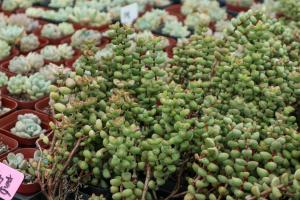What Type of Plastic are Plant Pots Made From?
When it comes to gardening, plant pots are an essential tool for any hobbyist or professional. But have you ever stopped to wonder about the plastic material used to make them? Understanding the type of plastic used in plant pot production can help you make more informed decisions about your gardening practices and minimize your impact on the environment.
The Most Common Types of Plastic in Plant Pot Production
The two most common plastics used in the production of plant pots are Polypropylene (PP) and High-Density Polyethylene (HDPE). PP is a thermoplastic polymer often used in packaging and labeling, while HDPE is a strong, durable plastic typically used in large containers like milk jugs and laundry detergent bottles. Both of these types of plastic are popular in plant pot production because of their resistance to moisture, light weight, and durability.
The Environmental Impact of Plastic Plant Pots
While PP and HDPE are excellent materials for plant pot production, there are concerns about the environmental impact of the production and disposal of these plastics. When plastic waste isn't properly recycled, it can end up in our oceans and natural ecosystems, harming wildlife and contributing to global pollution. Furthermore, it can take hundreds of years for plastic to break down, meaning it will continue to pollute our planet for generations to come.
Solutions for More Sustainable Plant Pot Production
Fortunately, there are multiple solutions for more sustainable plant pot production. One option is to use biodegradable materials like cornstarch or natural fibers to make plant pots. These materials are known to break down quickly and won't contribute to the plastic pollution problem. Another option is to use recycled plastic in plant pot production. This ensures that plastic waste isn't adding to the problem and instead is being repurposed for a new use. Finally, consumers can take an active role in ensuring their plastic plant pots are properly recycled after use, keeping them out of landfills and natural environments.
Conclusion
In conclusion, plant pots are made from two of the most common types of plastic, Polypropylene and High-Density Polyethylene. While these materials are durable and resistant, there are concerns about their environmental impact. To minimize your own impact on the planet, consider using biodegradable materials or recycled plastic in your gardening practices. Additionally, be sure to properly recycle your plastic plant pots after use to ensure they don't end up polluting our planet and harming our natural ecosystems.

 how many times do yo...
how many times do yo... how many planted tre...
how many planted tre... how many pine trees ...
how many pine trees ... how many pecan trees...
how many pecan trees... how many plants comp...
how many plants comp... how many plants can ...
how many plants can ... how many plants and ...
how many plants and ... how many pepper plan...
how many pepper plan...































